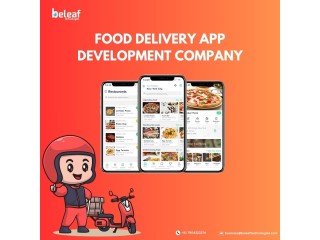Wrapping paper Full-time Job
2 years ago - Executive / Head Chef - Davangere - 74 viewsJob Details
We throw away an estimated 227,000 miles of wrapping paper each year at Christmas in the UK, according to waste management company BIFFA.
That's enough to wrap around the Earth... more than eight times.
But it brands itself as paper - so surely it all just gets recycled?
The short answer? Not always.
The holidays are often a time for giving into guilty pleasures, and for many of us that means indulging in one too many treats. As we enter a different kind of holiday season with a heightened focus on food safety amid a pandemic, there’s a greater emphasis on the need for keeping the food protected properly, including the wrapping on your favorite sweets and candies. As a result, a unique dilemma has emerged – what do we do with all the packaging, especially since much of it can’t be easily recycled through traditional methods?
The “Scare”: The Packaging We Need is Difficult to Recycle
Candy wrappers are primarily designed to keep products fresh and safe for consumption, and in the case of softer treats like chocolate, help maintain form and avoid the messes that might result from melting. Many of these wrappers are made from innovative solutions that combine different materials like aluminum, paper and plastic. This mixture of materials is highly effective at maintaining quality, and keeping packaging weight to a minimum, but it presents a real recycling challenge.
The other aspect of the challenge here in the U.S. is accessibility, while in other parts of the world they’re a few steps ahead. In Australia, for example, soft plastics from many chocolate and lollipop wrappers are recyclable through the Red Cycle collection bins available at most supermarkets. The wrappers are recycled and then used to make products like benches and fences.
The “Trick”: Thinking Outside the “Zero Waste” Box
The phrase ‘looks aren’t everything’ almost certainly does not apply to new products that you want to introduce to the market. After all, there is no doubt; the more attractive the candy boxes and wraps are, the more people will be interested in trying it out.
And although it might be a struggle to keep up with and stand out amongst the latest trends in candy packaging, this step is crucial to create an interesting product your customers will love. So you might be wondering, is it really that important for me to create innovative packaging?
For us it is not so important to have answers as soon as possible, but to have the right answer. It’s about more than an LCA, it’s about the ecological footprint, CO2, water, energy consumption, energy sources, and what happens after consumption. We want to understand all pieces of the jigsaw and adapt it piece by piece. I would like to underline that I don’t want to engage in plastic bashing. Even though we have been talking a lot about paper, our plastic packaging material does a great job too - it is recyclable, albeit more in theory than in practice, and weighs just 1.5 grams. Our overall intention is to look at the future and to solve issues, one of which is recyclability, which is not always given especially for flexible packaging. In Germany, we have a good collection and recycling infrastructure for plastic, but internationally, there are better better collection and recycling systems in place for paper than there are for plastics, so we believe in paper and also want to understand plastic better. Packaging is an integral part of the overall Ritter sustainability strategy. We often talk about raw materials such as cocoa in a sustainability context, but consumer see the packaging just as much as they see the chocolate, so it is just as important as the ingredients are.
Why you shouldn’t wrap your food in aluminium foil before cooking it
If you’re baking fish, roasting vegetables or preparing a piece of meat for dinner tonight, chances are that you’ll wrap your food in aluminium foil. What you may not realise is that some of the foil will leach into your meal – and this could be bad for your health.
Research that I conducted with a group of colleagues has explored the use of aluminium for cooking and preparing food. Aluminium doesn’t just appear in foil: it is the most popular cookware material used by people in developing countries. Pots and pans are lined with it and it is found in some kitchen utensils like large serving spoons. Copper used to fulfil this role, but over time it’s been replaced by aluminium because it is cheaper to mass produce and easier to clean.
But while cooking your food in aluminium pots or pans isn’t a bad thing, placing it in foil and putting it in the oven is problematic. This is especially true with acidic or spicy food that’s prepared at high temperatures.
Aluminium and health
Human bodies can excrete small amounts of aluminium very efficiently. This means that minimal exposure to aluminium is not a problem: the World Health Organisation has established a safe daily intake of 40mg per kilogram of body weight per day. So for a person who weighs 60kg the allowable intake would be 2400 mg.


